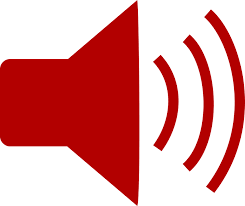 Hearing aids should appeal to those with significant hearing loss. It’s a given that hearing loss interferes with communication – which itself is a risk for social isolation – as well as fall risk and dementia. Ironically, according to the recently published and comprehensive MarkeTrak10 survey, the decision to wear them is so often delayed years – the delay resulting from excuses like “hear well enough; can’t afford; too expensive; no coverage.” Given the associated risks and isolation from delay, it is surprising that until recently, the devices were well-matched with the excuses. What’s changed to overcome all of these excuses?
Hearing aids should appeal to those with significant hearing loss. It’s a given that hearing loss interferes with communication – which itself is a risk for social isolation – as well as fall risk and dementia. Ironically, according to the recently published and comprehensive MarkeTrak10 survey, the decision to wear them is so often delayed years – the delay resulting from excuses like “hear well enough; can’t afford; too expensive; no coverage.” Given the associated risks and isolation from delay, it is surprising that until recently, the devices were well-matched with the excuses. What’s changed to overcome all of these excuses?
Technology innovation. At the high end (meaning very expensive), hearing aids are increasingly clever. Starkey’s Livio AI hearing aids have the capability to detect falls, track and analyze activity – combining with a smartphone (Android) app or iPhone for real-time adjustments based on changes in environment and preference. According to Carole Rogin, one of the MarkeTrak10 authors, soon all hearing aids will have built in fall detection and predictive analytics. And increasingly, like the Phonak AutoSense offering to automatically adjust to changes in environment without user intervention. Offerings like Bose Hearphones and Nuheara IQ BOOST have been leaders in an amplification category call Hearables – which in turn will likely continue to push the rest of the industry to improve sound quality.
Price and distribution innovation. Consumers want self-service in all aspects of their lives – and hearing aids are no different. Not surprisingly self-service offerings (Direct to Consumer or DTC) appear to be correlated with lower price. Some (especially traditional audiologists) might say that some of these hearing aids are of lower quality. Most would argue that the missing feature is the audiologist adjustment process though that can be delivered remotely as part of the purchase price. For those starting to squint at this array of terminology, add OTC (Over the Counter) sale of hearing aids – no audiologist involved.
What is the real problem to be solved? As a not-small side effect of the gyrations in this industry, the consumer may be rightfully confused – how bad is my hearing, can I check it myself and am I at risk of developing health issues if it is not corrected? Do I need an expert exam what about an implant? Do I need expensive hearing aids? Why doesn’t insurance cover them? Will some less expensive (and even somewhat insurance-subsidized) options do the job? Do they always need regular adjustment, what is the role of the smartphone app? But meanwhile, the new terminology and alphabet soup of the space continues to expand. Consumers may be confused, but as the Market Trak report noted, they are the biggest beneficiary.
from Tips For Aging In Place https://www.ageinplacetech.com/blog/new-technology-and-services-disrupt-hearing-aid-ecosystem
No comments:
Post a Comment
Note: Only a member of this blog may post a comment.